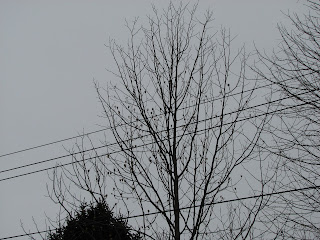We can not possibly know about every living thing on this earth. Nor do we need to know. So why are we drawn to the exotics when there are animals in our own back yards that we give no more than a cursory glance? How much do you know about the most common animals in your neighborhood? I wonder how many delights we miss because we are so used to seeing them.
"I will sit still and let the marvels and the adventures settle on me like flies. There are plenty of them I assure you. The world will never starve for want of wonders, but only for want of wonder." G.K. Chesterton
One of these non-exotics I have decided to spend a little more time examining is the squirrel. The only thing I knew is that they nest and play in my backyard and that there are grey ones and black ones.
Do you know the difference between the two? Apparently there is no difference, they are the same thing. "Indeed, many people believe that black squirrels are a separate species rather than a colour phase of the grey. In fact, his colouring may be grey, dark brown or black, red-brown, or pure white, but his most common colouring is grey or black.
Grey or Black Squirrel, the scientific name, Sciurus carolinensis, refers both to his plume-like tail, and the locality where he was first identified. Sciurus comes from the Greek and means "creature who sits in the shadow of his tail":, while carolinensis is the Latinized name for the original state of Carolina.
The halo effect of their tail is created by silver-tipped guard hairs.
The grey squirrel moults twice each year; in spring and in autumn. All his fur is replaced in the spring moult, which commences at his head; the autumn moult moves in the opposite direction, and excludes his tail."
I spent a few hours watching this one squirrel eat seeds and proceed to engage in a lengthy cleaning regiments every ten minutes or so. I was amazed at his flexibility and thoroughness.
I picked up this wonderful book because I was beginning to realize I was missing out on the wonders right outside my own door:
The Squirrels of Canada by S.E. Woods, Jr. where the 1980 edition has a wonderful drawing on the cover by
Jan Sharkey Thomas.









































